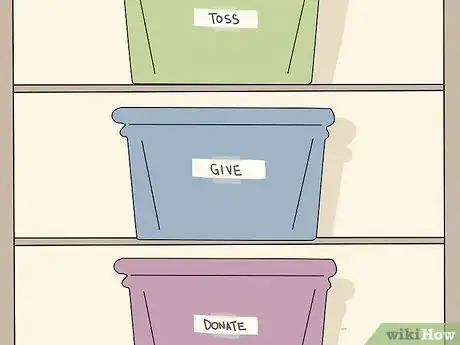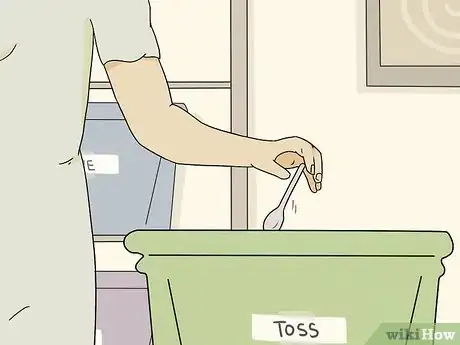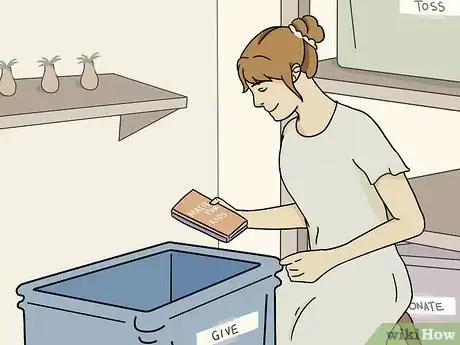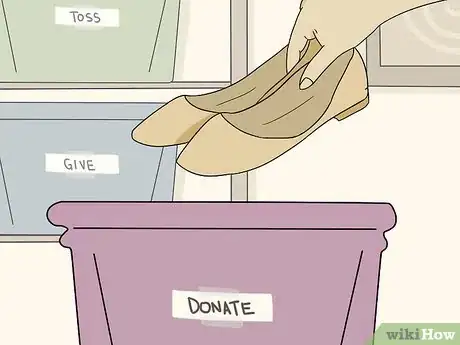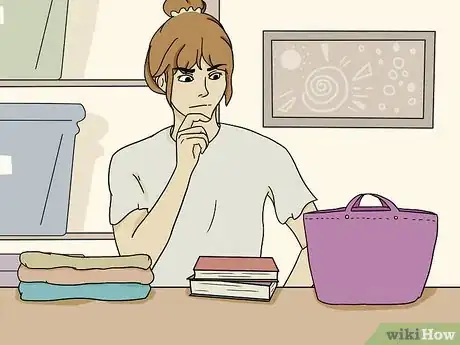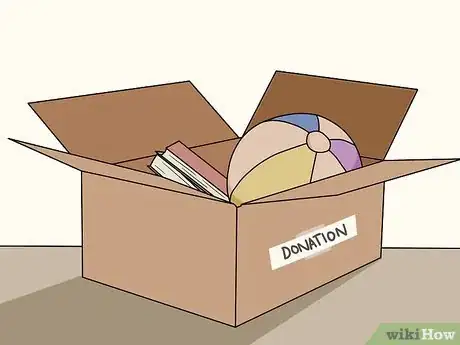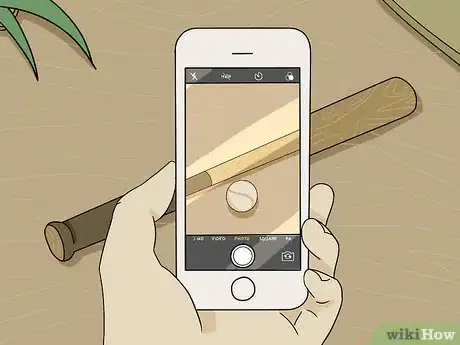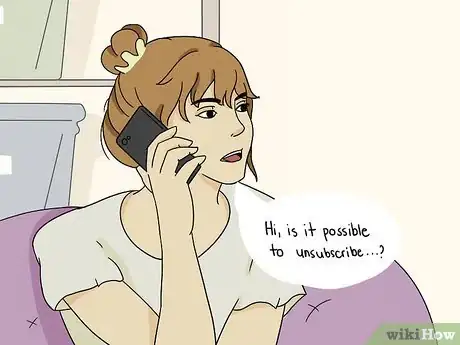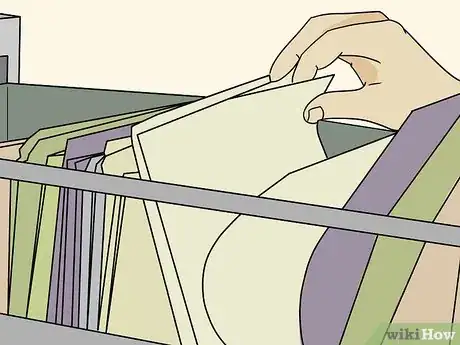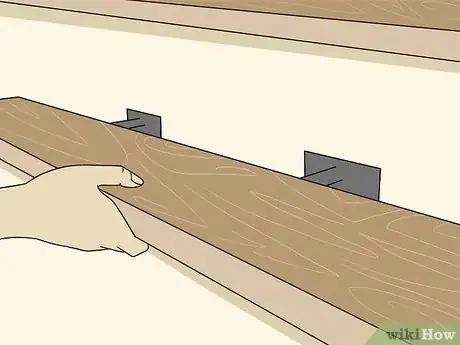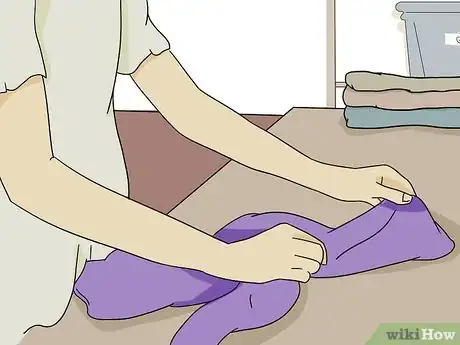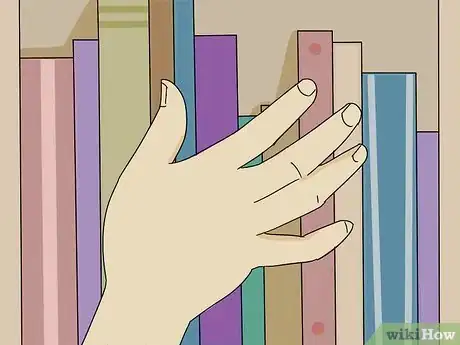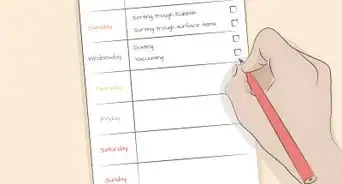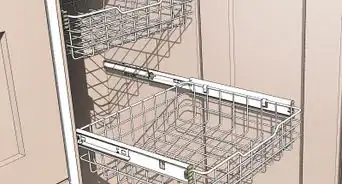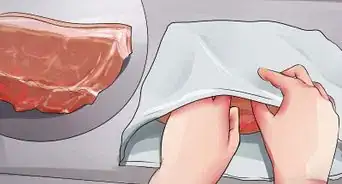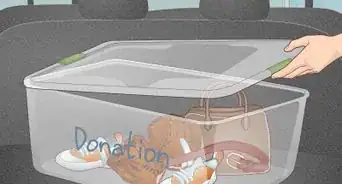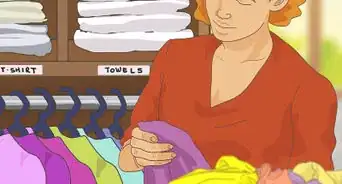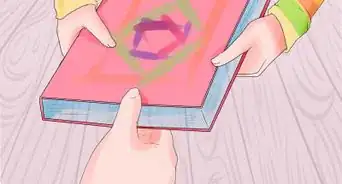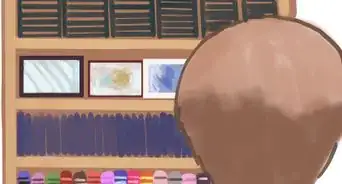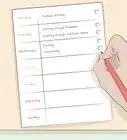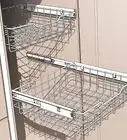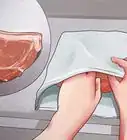This article was co-authored by Keith Bartolomei. Keith Bartolomei is a Professional Organizer who runs his own consulting business called Zen Habitat based in the San Francisco Bay Area. Keith is a member of the National Association of Productivity and Organizing Professionals (NAPO), and is a Certified KonMari Consultant. He has over six years of organizational experience and has been trained in the art of tidying, including being trained by author of The Life Changing Magic of Tidying Up, Marie Kondo, and her team. He has been voted as one of the Best Home Organizers in San Francisco by Expertise in 2018 and 2019.
There are 11 references cited in this article, which can be found at the bottom of the page.
wikiHow marks an article as reader-approved once it receives enough positive feedback. This article received 12 testimonials and 100% of readers who voted found it helpful, earning it our reader-approved status.
This article has been viewed 318,376 times.
You may not know where to begin when it comes to getting rid of the clutter in your space. It can feel overwhelming and frustrating. But it doesn’t have to be! There are strategies you can use to get rid of the clutter without stressing yourself out. Just by sorting it all, you’ll notice how much easier it is to organize everything. Of course, the best way to prevent clutter is to keep it from building up in the first place. And there are things you can do to keep that from happening, too!
Steps
Sorting through Clutter
-
1Label 3 large containers “Toss,” “Give,” and “Donate.” Before you start getting rid of clutter, you need to sort it first. Use 3 large containers and label them by writing on separate pieces of paper. Then tape the signs to the containers. You can reassess the contents of the boxes if you decide to change your mind.[1]
- Make sure the containers are large enough to hold the clutter in the room.
- Consider making the “Donate” container a box that you can close up and donate easily.
-
2Toss broken items and trash. Start with the easiest first: the garbage. Look through all of the clutter and put any broken toys and devices, old food, or any other trash that you can easily get rid of. Place them in the “Toss” container and throw them away when you are finished de-cluttering.[2]
- Throw out any plastic utensils and sauce packets that come with take-out food.
- Get rid of any frayed or damaged electrical cords.
- Check the expiration dates on the spices in your pantry and throw out any that are expired.
- Don’t keep old magazines that you know you will never read or use.
Advertisement -
3Give items that you no longer use to someone who can use them. As you’re sorting through your clutter, if you see an item that isn’t damaged, but you no longer use it, think about whether you know someone who could use it. Put the items that you know you can give to someone else in the box labeled “Give” and give it to them when you can.[3]
- Contact the person to see if they are interested in the item so you don’t continue to keep the clutter.
- Think about a friend, relative, or neighbor who could use toys or games that you or your kids no longer use.
Tip: If you find something that you borrowed from somebody, put it in the “Give” box so you can give it back to them.
-
4Donate items that are still useful but you no longer need. Items that you find that are in good condition but you never use and are just taking up space can be used by someone else. Place them into the box labeled “Donate” so you can bring them to a donation center later.[4]
- Donate items to Goodwill for a convenient way to pass along items that can still be used.
- Give specific items to charities that could use them. For example, if you have a pair of shoes that you don’t use but are in good condition, you could donate them to Soles4Souls.
-
5Review the items you decided to keep to make sure you need them. After you’ve sorted all of your clutter, you should be left only with items that you want to keep. Take another look through them to make sure they aren’t things that you could give away or donate.[5]
- If it’s an item that you no longer use, but is sentimental to you, think about giving it to someone close to you that you know can use it.
- You may also notice that your items are much easier to organize after you’ve gotten rid of clutter.
-
6Keep a box for regular donations. When you come across items that you no longer use or need but are still in good condition, put them in a box that you designate for donations. When to box starts to fill up, bring it to a donation center. Regular donations will continue to reduce your clutter and passes on quality items to people who can still use them.[6]
- Keep the box in a closet or another out of sight place so it doesn’t become clutter itself!
Minimizing Clutter
-
1Take a picture of items then let them go. If you have objects or items that you no longer have use for and are taking up space, but they have a sentimental value to you, take a picture of them and then throw them away or donate them. That way you can preserve them without having to hang on to them.[7]
- For example, take a picture of memorabilia like a program from a sporting event that you attended so you can remember the moment.
- Photograph gifts that you don’t use or are broken but mean something to you so you can remember them.
- Store your pictures on a digital drive or a cloud so you can have them forever.
-
2Unsubscribe from mailing lists. Junk mail and promotional offers can easily build up and start to clutter your house. Most junk mail will have a phone number or an address that allows you to contact them to opt-out of the mailing list.[8]
- You can also contact the post office and ask them to stop delivering mail from specific companies if they won’t stop sending you junk mail.
-
3Get rid of your DVDs and CDs. Upload your CDs to your computer so you don’t need to keep them around taking up space. Buy digital downloads of movies and shows instead of DVDs so you don’t need to store them either. If you can part with a CD or DVD, give them away or donate them so someone else can enjoy them.[9]
- Throw out multiple copies of DVDs or CDs if you have them.
-
4Enter information from business cards into a contact list. Gone are the days of Rolodex and binders full of business cards. Make a spreadsheet of all of the contact information including names, phone numbers, email addresses, mailing addresses, and notes to remind you of who the person is. You can then toss the card in the trash![10]
Tip: Upload your spreadsheet to a digital drive or using a Google sheet so you can access and add to the spreadsheet at any time.
-
5File important papers away whenever you get them. Create a filing system so you can file bills, notices, personal documents, or any other important paperwork as soon as you get it. That way, you never give the papers a chance to pile up and turn into clutter.[11]
- Use a filing cabinet as a convenient way to store and organize your papers.
-
6Download an app to scan your receipts so you can throw them away. Instead of keeping a box or a drawer full of receipts that you may need to use for expense reports or tax purposes, you can use an app on your smartphone or tablet that allows you to scan your receipts. Many apps even pull the information from the receipt and make spreadsheets of the expenses.[12]
- Popular receipt apps include Expensify, Evernote, Smart Receipts, and Zoho Expense.
Staying Clutter-Free
-
1Build shelves to keep your items when you aren’t using them. Adding shelves to your walls, cabinets, or closets is an easy and affordable way to create more space for you to store items until you need them. Go to your local hardware store and pick up some wooden panels and mount them to your walls.[13]
- Make sure you mount the shelves on wall studs if you’re building them on your walls.
- Test the shelves by putting weight on them before you place a bunch of items on them.
-
2Hang an organizer on the back of your door. Use the space behind your door to store items that you don’t use often by adding a hanging door organizer. The slots and pockets can hold and organize your items so you can find them when you need them.[14]
- Look online or check in the home improvement section of your local department store for hanging door organizers.
-
3Use stackable plastic shelves to store household items. Choose stackable shelves that match the look of your space and can hold all of your items like light bulbs, vacuum cleaner bags, and batteries. You can access them easily if you ever need the items, but they will stay out of sight when you aren’t using them.[15]
- You can find plastic shelves at local department stores, home improvement stores, and online.
-
4Fold and put away your clothes as soon as you wash them. Laundry is often one of the biggest culprits of clutter. Keep it from piling up by folding it and putting them up in drawers and hanging in closets as soon as you take them out of the dryer. Don’t put it off until later![16]
Tip: Designate a basket or hamper for dirty laundry so it’s contained until it’s time for you to do your laundry.
-
5Put away anything that you don’t use often. Clutter has a habit of accumulating quickly. Rather than leaving something out after you use it, put it away as soon as you’re done with it so it doesn’t end up laying out and taking up space.[17]
- Put your book back on the shelf when you’re done reading it.
- Place your dishes in the sink or dishwasher when you’re finished with them instead of leaving them out for later.
Expert Q&A
Did you know you can get expert answers for this article?
Unlock expert answers by supporting wikiHow
-
QuestionHow do you declutter your home?
 Keith BartolomeiKeith Bartolomei is a Professional Organizer who runs his own consulting business called Zen Habitat based in the San Francisco Bay Area. Keith is a member of the National Association of Productivity and Organizing Professionals (NAPO), and is a Certified KonMari Consultant. He has over six years of organizational experience and has been trained in the art of tidying, including being trained by author of The Life Changing Magic of Tidying Up, Marie Kondo, and her team. He has been voted as one of the Best Home Organizers in San Francisco by Expertise in 2018 and 2019.
Keith BartolomeiKeith Bartolomei is a Professional Organizer who runs his own consulting business called Zen Habitat based in the San Francisco Bay Area. Keith is a member of the National Association of Productivity and Organizing Professionals (NAPO), and is a Certified KonMari Consultant. He has over six years of organizational experience and has been trained in the art of tidying, including being trained by author of The Life Changing Magic of Tidying Up, Marie Kondo, and her team. He has been voted as one of the Best Home Organizers in San Francisco by Expertise in 2018 and 2019.
Professional Organizer & Certified KonMari Consultant Looking at how much clutter is in your home can be overwhelming. Before you begin, break the organizing process down into steps and only do one at a time. Whether that is organizing a specific location or starting with a particular category. When you organize your belongings by category, you get a better inventory of what you have. Instead of looking at the books on your bookshelf, look at the books in your entire house. Then look at the clothes in the whole house, and so on. As you move through categories, decide where each item will live. Everything that you're keeping needs a home, and once you choose its home, it needs a way to stay there, like a container or drawer. Every time you use something, it needs to go back to its home.
Looking at how much clutter is in your home can be overwhelming. Before you begin, break the organizing process down into steps and only do one at a time. Whether that is organizing a specific location or starting with a particular category. When you organize your belongings by category, you get a better inventory of what you have. Instead of looking at the books on your bookshelf, look at the books in your entire house. Then look at the clothes in the whole house, and so on. As you move through categories, decide where each item will live. Everything that you're keeping needs a home, and once you choose its home, it needs a way to stay there, like a container or drawer. Every time you use something, it needs to go back to its home. -
QuestionHow do I get rid of a pile of clothes as big as me on my carpet?
 Community AnswerPut some music on and sort through it piece by piece putting it into three piles: keep, throw away and goodwill.
Community AnswerPut some music on and sort through it piece by piece putting it into three piles: keep, throw away and goodwill. -
QuestionHow can I motivate myself to clear the clutter?
 Community AnswerImagine what the room will look like after it's cleared. Think of how easy it will be to move around the room. Then turn on some high-energy music and get to work!
Community AnswerImagine what the room will look like after it's cleared. Think of how easy it will be to move around the room. Then turn on some high-energy music and get to work!
References
- ↑ https://www.washingtonpost.com/lifestyle/home/i-was-getting-buried-in-clutter-heres-how-i-finally-got-free/2018/01/16/c6592f1a-e054-11e7-bbd0-9dfb2e37492a_story.html?utm_term=.86183542dc28
- ↑ https://www.simplemost.com/get-ride-clutter-have-organized-home/
- ↑ https://www.washingtonpost.com/lifestyle/home/i-was-getting-buried-in-clutter-heres-how-i-finally-got-free/2018/01/16/c6592f1a-e054-11e7-bbd0-9dfb2e37492a_story.html?utm_term=.86183542dc28
- ↑ https://www.washingtonpost.com/lifestyle/home/i-was-getting-buried-in-clutter-heres-how-i-finally-got-free/2018/01/16/c6592f1a-e054-11e7-bbd0-9dfb2e37492a_story.html?utm_term=.86183542dc28
- ↑ https://www.hgtv.com/design/decorating/clean-and-organize/how-to-get-rid-of-clutter-in-your-home
- ↑ https://idreamofclean.net/10-foolproof-ways-to-reduce-clutter/
- ↑ https://www.washingtonpost.com/lifestyle/home/i-was-getting-buried-in-clutter-heres-how-i-finally-got-free/2018/01/16/c6592f1a-e054-11e7-bbd0-9dfb2e37492a_story.html?utm_term=.86183542dc28
- ↑ https://casedesign.com/inspiration/25-steps-on-how-to-remove-clutter/
- ↑ https://casedesign.com/inspiration/25-steps-on-how-to-remove-clutter/
- ↑ https://www.hgtv.com/design/decorating/clean-and-organize/how-to-get-rid-of-clutter-in-your-home
- ↑ https://www.hgtv.com/design/decorating/clean-and-organize/how-to-get-rid-of-clutter-in-your-home
- ↑ https://www.hgtv.com/design/decorating/clean-and-organize/get-organized-and-control-the-clutter
- ↑ https://www.familyhandyman.com/storage-organization/storage-tips-for-cutting-clutter/
- ↑ https://www.extraspace.com/blog/home-organization/minimalist-guide-to-home-decluttering-organizing/
- ↑ https://www.bhg.com/decorating/storage/organization-basics/ways-to-reduce-clutter/?slide=slide_98043#slide_98043
- ↑ https://afineparent.com/simplify-life/clutter-free-home.html
- ↑ https://bemorewithless.com/50-more-ways-to-leave-your-clutter/
About This Article
To get rid of clutter, start by emptying everything out of your closet, drawers, and other storage nooks like under your bed. Next, sort through the items, creating a separate pile for everything you've outgrown or no longer use. Throw away loose papers and items that aren't worth donating. Then, clean the items you want to keep and put everything else back where it belongs! You can invest in storage solutions like stackable shelves and hanging door organizers to keep your space tidy. If you want to minimize paper clutter, consider unsubscribing from mailing lists and creating a filing system for important documents to keep them organized. For tips on sorting through your items effectively, read on!
